右美沙芬, BR,Dextromethorphan
产品编号:西域试剂-WR148459| CAS NO:125-71-3| 分子式:C18H25NO| 分子量:271.4
本网站销售的所有产品仅用于工业应用或者科学研究等非医疗目的,不可用于人类或动物的临床诊断或者治疗,非药用,非食用,
| 英文名称 | Dextromethorphan |
|---|---|
| CAS编号 | 125-71-3 |
| 产品沸点 | 394.9±42.0 °C at 760 mmHg |
| 产品密度 | 1.1±0.1 g/cm3 |
| 产品闪点 | 116.2±30.2 °C |
| 精确质量 | 271.193604 |
| PSA | 12.47000 |
| LogP | 4.11 |
| 蒸气压 | 0.0±0.9 mmHg at 25°C |
| 折射率 | 1.585 |
| 储存条件 | ?20°C |
相关文档
化学品安全说明书(MSDS)
下载MSDS质检证书(COA)
相关产品
| 符号 |
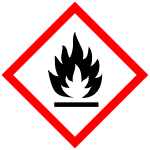
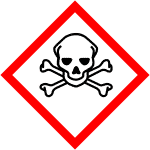
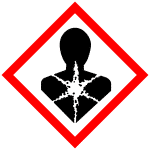
GHS02, GHS06, GHS08 |
|---|---|
| 信号词 | Danger |
| 危害声明 | H225-H301 + H311 + H331-H370 |
| 警示性声明 | P210-P260-P280-P301 + P310-P311 |
| 危害码 (欧洲) | F,T |
| 风险声明 (欧洲) | 11-23/24/25-39/23/24/25 |
| 安全声明 (欧洲) | 16-36/37-45 |
| 危险品运输编码 | 3249 |
| 包装等级 | III |
| 危险类别 | 6.1(b) |
|
Section 1. Chemical Product and Company Identification Dextromethorphan Common Name/ Trade Name Dextromethorphan Section 4. First Aid Measures Eye ContactCheck for and remove any contact lenses. In case of contact, immediately flush eyes with plenty of water
for at least 15 minutes. Get medical attention if irritation occurs. Skin ContactWash with soap and water. Cover the irritated skin with an emollient. Get medical attention if irritation develops. Serious Skin ContactNot available. InhalationIf inhaled, remove to fresh air. If not breathing, give artificial respiration. If breathing is difficult, give oxygen. Get medical attention. Serious InhalationEvacuate the victim to a safe area as soon as possible. Loosen tight clothing such as a collar, tie, belt or waistband. If breathing is difficult, administer oxygen. If the victim is not breathing, perform mouth-to-mouth resuscitation. Seek medical attention. IngestionIf swallowed, do not induce vomiting unless directed to do so by medical personnel. Never give anything by mouth to an unconscious person. Loosen tight clothing such as a collar, tie, belt or waistband. Get medical attention immediately. Serious IngestionNot available. Section 5. Fire and Explosion Data Flammability of the Product May be combustible at high temperature. Auto-Ignition Temperature Not available. Not available. Flash Points Flammable LimitsNot available. Products of CombustionThese products are carbon oxides (CO, CO2), nitrogen oxides (NO, NO2...). Fire Hazards in Presence of Slightly flammable to flammable in presence of heat. Various Substances Risks of explosion of the product in presence of mechanical impact: Not available. Explosion Hazards in Risks of explosion of the product in presence of static discharge: Not available. Presence of Various Substances Fire Fighting MediaSMALL FIRE: Use DRY chemical powder. and InstructionsLARGE FIRE: Use water spray, fog or foam. Do not use water jet. Special Remarks onNot available. Fire Hazards Special Remarks on Explosion Not available. Hazards Section 6. Accidental Release Measures Small SpillUse appropriate tools to put the spilled solid in a convenient waste disposal container. Large SpillPoisonous solid. Stop leak if without risk. Do not get water inside container. Do not touch spilled material. Use water spray to reduce vapors. Prevent entry into sewers, basements or confined areas; dike if needed. Eliminate all Dextromethorphan Section 7. Handling and Storage PrecautionsKeep away from heat. Keep away from sources of ignition. Ground all equipment containing material. Do not ingest. Do not breathe dust. Wear suitable protective clothing. If ingested, seek medical advice immediately and show the container or the label. Keep away from incompatibles such as alkalis. Keep container tightly closed. Keep container in a cool, well-ventilated area. Storage Section 8. Exposure Controls/Personal Protection Engineering ControlsUse process enclosures, local exhaust ventilation, or other engineering controls to keep airborne levels below recommended exposure limits. If user operations generate dust, fume or mist, use ventilation to keep exposure to airborne contaminants below the exposure limit. Personal ProtectionSafety glasses. Lab coat. Dust respirator. Be sure to use an approved/certified respirator or equivalent. Gloves. Personal Protection in Case of Splash goggles. Full suit. Dust respirator. Boots. Gloves. A self contained breathing apparatus should be a Large Spillused to avoid inhalation of the product. Suggested protective clothing might not be sufficient; consult a specialist BEFORE handling this product. Exposure LimitsNot available. Section 9. Physical and Chemical Properties Physical state and appearance Solid.OdorNot available. Not available. Taste Molecular Weight271.44 g/mole Not available. Color Not available. pH (1% soln/water) Boiling PointDecomposes. 111°C (231.8°F) Melting Point Critical TemperatureNot available. Specific GravityNot available. Vapor PressureNot applicable. Vapor DensityNot available. Not available. Volatility Odor ThresholdNot available. Not available. Water/Oil Dist. Coeff. Ionicity (in Water)Not available. Dispersion PropertiesNot available. SolubilityNot available. Section 10. Stability and Reactivity Data StabilityThe product is stable. Instability TemperatureNot available. Conditions of InstabilityExcess heat Incompatibility with various Reactive with alkalis. substances CorrosivityNon-corrosive in presence of glass. Special Remarks onNot available. Reactivity Dextromethorphan Not available. Special Remarks on Corrosivity PolymerizationWill not occur. Section 11. Toxicological Information Routes of EntryInhalation. Ingestion. Acute oral toxicity (LD50): 116 mg/kg [Rat]. Toxicity to Animals Chronic Effects on Humans Not available. Other Toxic Effects onHazardous in case of ingestion. HumansSlightly hazardous in case of skin contact (irritant), of inhalation. Special Remarks onNot available. Toxicity to Animals Special Remarks onMay cause adverse reproductive effects based on animal test data. Chronic Effects on Humans Special Remarks on otherAcute Potential Health Effects: Toxic Effects on HumansSkin: May cause skin irritation. Eyes: May cause eye irritation. Inhalation: May cause respiratory tract irritation. Ingestion: Can cause stomach pain, nausea, vomiting, pupillary dilation, blurry vision, facial flushing. May affect behavior/central nervous system (central nervous system depression, excitement, tremor, dizziness, drowsiness, confusion, nervousness, irritability, hallucinations, ataxia, stupor, convulsions/seizures, muscle contraction or spasticity, analgesia, dystonia, coma), brain (degenrative changes), spinal (degenerative changes), hair, cardiovascular system (hypertension, hypotension, tachycardia), respiration (respiratory depression). Section 12. Ecological Information EcotoxicityNot available. BOD5 and CODNot available. Possibly hazardous short term degradation products are not likely. However, long term degradation Products of Biodegradation products may arise. The products of degradation are less toxic than the product itself. Toxicity of the Products of Biodegradation Special Remarks on theNot available. Products of Biodegradation Section 13. Disposal Considerations Waste DisposalWaste must be disposed of in accordance with federal, state and local environmental control regulations. Section 14. Transport Information DOT ClassificationCLASS 6.1: Poisonous material. UNNA: 2811 : Toxic solid, organic, n.o.s. (dextromethorphan) PG: III Identification Special Provisions forNot available. Transport DOT (Pictograms) Dextromethorphan Section 15. Other Regulatory Information and Pictograms No products were found. Federal and State Regulations CaliforniaCalifornia prop. 65: This product contains the following ingredients for which the State of California has Proposition 65found to cause cancer which would require a warning under the statute: No products were found. Warnings California prop. 65: This product contains the following ingredients for which the State of California has found to cause birth defects which would require a warning under the statute: No products were found. Other RegulationsOSHA: Hazardous by definition of Hazard Communication Standard (29 CFR 1910.1200). EINECS: This product is on the European Inventory of Existing Commercial Chemical Substances. WHMIS (Canada) CLASS D-1B: Material causing immediate and serious toxic effects (TOXIC). Other Classifications DSCL (EEC)R25- Toxic if swallowed.S45- In case of accident or if you feel unwell, seek medical advice immediately (show the label where possible). Health Hazard HMIS (U.S.A.)2 National Fire Protection 1 Flammability 1 Association (U.S.A.) Fire Hazard 2 0 Reactivity Health Reactivity 0 Specific hazard Personal Protection E WHMIS (Canada) (Pictograms) DSCL (Europe) (Pictograms) TDG (Canada) (Pictograms) ADR (Europe) (Pictograms) Protective Equipment Gloves. Lab coat. Dust respirator. Be sure to use an approved/certified respirator or equivalent. Wear appropriate respirator when ventilation is inadequate. Safety glasses. SECTION 16 - ADDITIONAL INFORMATION N/A |
| 上游产品 10 | |
|---|---|
| 下游产品 2 | |

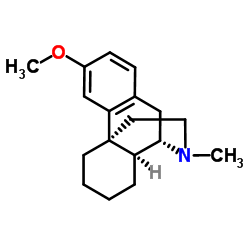
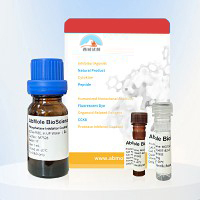
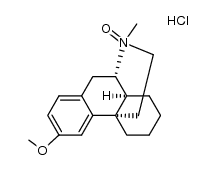
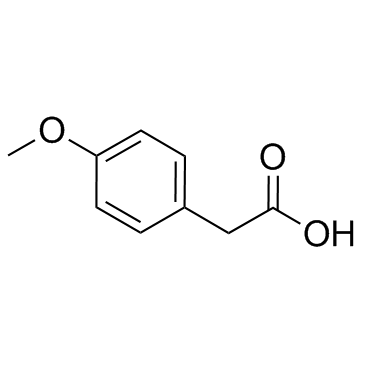
![3,4,5,6,7,8-hexahydro-1-[(4-methoxyphenyl)methyl]isoquinoline结构式](/20230522/51072-35-6.png)
![N-[2-(1-cyclohexen-1-yl)ethyl]-2-(4-methoxyphenyl)acetamide结构式](/20230522/51072-34-5.png)
![(Z)-2-Formyl-1-[(4-methoxyphenyl)methylene]-1,2,3,4,5,6,7,8-octahydroisoquinoline结构式](/20230522/116172-20-4.png)

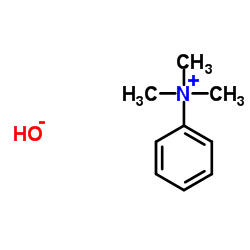
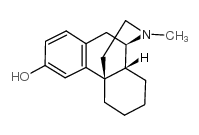
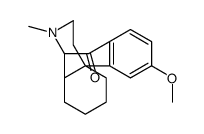

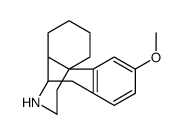





 浙公网安备 33010802013016号
浙公网安备 33010802013016号